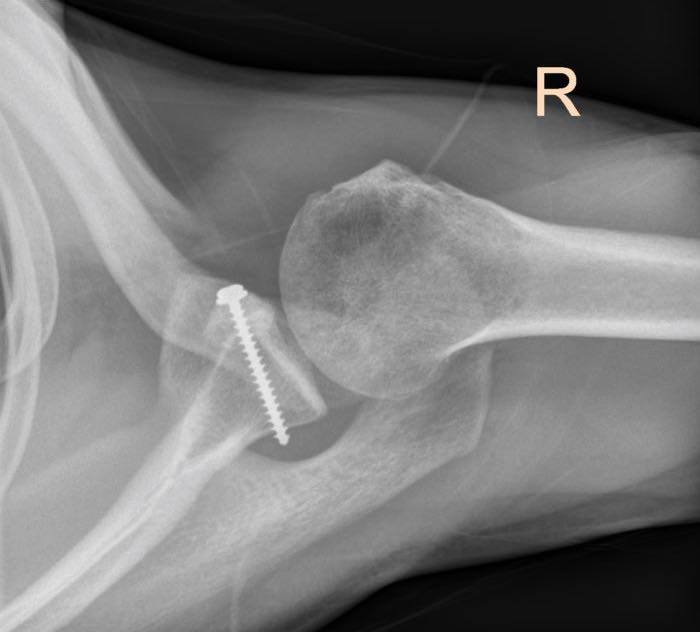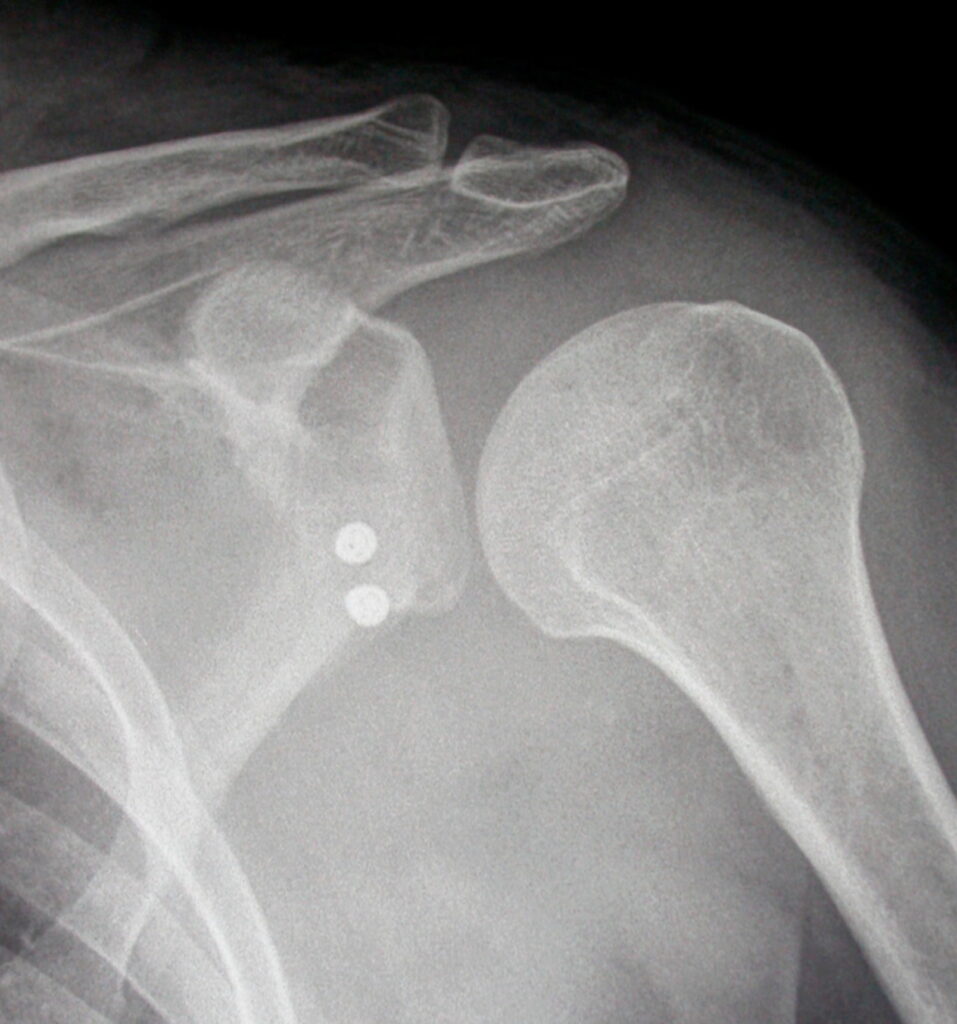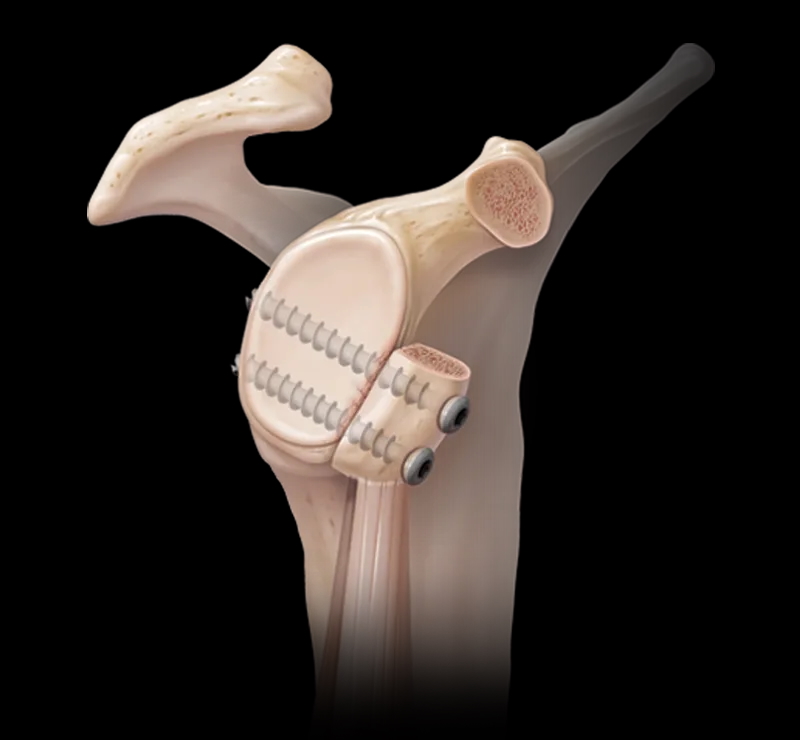The Latarjet procedure is a well-established surgery, particularly for those with significant bone loss or recurring instability after previous treatments. By combining bone grafting, tendon repositioning, and soft tissue repair, the Latarjet procedure offers a robust solution for preventing further dislocations and restoring function.
Indications for surgery
The Latarjet procedure is typically the first choice for cases of shoulder instability requiring additional structural support to the shoulder joint and is recommended for individuals who:
- Have shoulder instability with significant bone loss in the socket or humeral head
- Have persistent or recurring instability following an arthroscopic stabilisation procedure
- Are high-demand patients, such as athletes in contact sports or those with physically demanding jobs
Read more about shoulder instability below.
What the surgery involves
The Latarjet procedure uses a “triple play” approach, which provides comprehensive stability by addressing both bone and soft tissue components. This is an open surgical operation performed through a small incision at the front of the shoulder. Here’s what happens during the procedure:
- Bone Graft Placement: A piece of bone with its attached muscle and tissue is taken from the shoulder blade
- Securing the Graft: The bone graft is fixed to the front of the shoulder socket using two screws, adding bone structure and acting as a physical barrier to prevent dislocation
- Tendon Repositioning: The tendon attached to the graft is strategically repositioned to act as a sling, providing additional stability
- Labrum Repair: The torn labrum is repaired, and the joint capsule is tightened to further secure the shoulder


What to expect after surgery
Recovery from the Latarjet procedure requires a balance of rest, immobilisation, and guided rehabilitation. Here’s what to expect:
- You will need to wear a sling for six weeks to allow the bone graft to heal
- Pain medications are prescribed to keep you comfortable during the initial recovery phase
- A rehabilitation program begins shortly after surgery to prevent stiffness, regain motion, and build strength
Read Dr Lambers’ full post-operative latarjet rehabilitation protocol below:
How long will you be in hospital?
The Latarjet procedure is typically performed as a same-day surgery, allowing you to return home on the same day of the operation. You will need to be picked up by and cared for by someone for your first night at home.
Usual recovery times
- First 6 Weeks: Shoulder immobilised in a sling with light, guided physiotherapy exercises
- 6–12 Weeks: Focus on regaining range of motion and light strengthening exercises
- 3–6 Months: Resume low-impact activities and work tasks, depending on your role.
- 6–12 Months: Depending on recovery progress, you can return to full activities, including sports or heavy physical work
Note: Professional athletes may return to competitive play as early as four months after surgery if they adhere to their rehabilitation plan properly.
Choosing to undergo the Latarjet procedure
As with all surgery, this is a significant decision that should not be rushed. Take the time to consider your lifestyle, recovery expectations, and goals. Discuss all your options with Dr Lambers and ensure you feel fully informed and confident before moving forward. Remember, the choice is yours to make, and it’s important to prioritise what’s best for your health and well-being.

